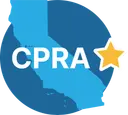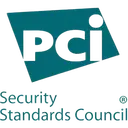In our sometimes dizzying regulatory landscape, managing compliance risk is more important than ever. Organizations must stay agile and proactive in addressing potential risks to avoid costly legal penalties, financial losses, and reputational damage.
This comprehensive guide will take you through the ins and outs of compliance risk management and help you navigate the complex world of compliance with confidence.
Short summary
- Understand compliance risk to stay compliant and reduce potential losses
- Implement policies, procedures, risk assessment & monitoring/reporting for successful oversight
- Develop a culture of compliance with continuous improvement & legal/regulatory updates
Why is compliance so important? Understanding compliance risk
Compliance risk management is an integral part of any organization. It involves the identification, evaluation, and mitigation of potential losses stemming from the failure to adhere to laws, regulations, and standards, as well as internal and external policies and procedures.
By keeping up with the latest rules and regulations, organizations can minimize the risks associated with non-compliance to avoid legal penalties, financial losses, and reputational damage.
Different industries face unique compliance challenges, with industry-specific regulations and standards that must be adhered to. Understanding the specific compliance risks your organization faces is crucial for developing an effective compliance risk management strategy, as the consequences of non-compliance can be severe, affecting not only your organization’s bottom line but also its reputation and supply chain relationships.
Three key components of compliance risk management
To effectively manage compliance risks, organizations must have a robust risk and compliance management system in place. This program should include three key components:
- Policies and procedures
- Risk assessment
- Monitoring and reporting
Let’s look at each of these in more detail.
1. Policies and procedures
By having well-defined policies and processes in place, organizations can ensure they address all compliance requirements, reducing the likelihood of non-compliance and its associated consequences.
Examples of compliance policies and procedures include:
- Data security policies
- Incident response plans
- Employee training programs that cover relevant laws, regulations, and industry standards
In addition, compliance contracts can help ensure adherence to terms and conditions, thereby minimizing the risk of fraud, corruption, and reputational damage.
2. Risk assessment
The risk assessment process involves examining various factors, such as the organization’s operations, industry, size, and geographical location, to determine the likelihood and impact of non-compliance.
Once risks have been identified, organizations can use the results to develop an enterprise risk management strategy, focusing on compliance risk. For example, if a risk assessment reveals a weakness in remote work procedures, the organization can address this issue by implementing more detailed remote work policies. This way, you’ll see a constant feedback loop between risk assessment and policies and procedures.
3. Monitoring and reporting
Sometimes, it can be hard to see something you’re not tracking. Ongoing monitoring and reporting of compliance efforts are vital for maintaining transparency, accountability, and continuous improvement.
Effective compliance monitoring and reporting can help organizations continually identify improvement areas and track their compliance initiatives’ progress.
Technology and automation can play a significant role in streamlining monitoring and reporting processes, ensuring compliance efforts are accurately tracked and reported promptly. For instance, automation systems for compliance can provide audit trails, map out processes, and establish approval workflows, reducing the risk of human error and ensuring that compliance activities are carried out consistently and effectively.

GET THE GUIDE
SOC 2 as a Strategic Business Generator
Compliance isn’t just required, it’s good business. Download our guide to find out how to make SOC 2 work for you.
Industry-specific compliance challenges
Different industries face unique compliance risks and requirements, emphasizing the need for tailored compliance risk management strategies.
For example, the healthcare industry must comply with the Health Insurance Portability and Accountability Act (HIPAA), which protects the security and privacy of protected health information (PHI).
In the financial sector, organizations must adhere to various regulations governing financial reporting, anti-money laundering, and consumer protection.
Organizations must be well-versed in the industry-specific compliance risks and requirements of their industry. By understanding the unique compliance challenges of their industry, organizations can prioritize their compliance efforts and allocate resources effectively, ensuring that potential risks are managed proactively and comprehensively.
The role of technology in compliance risk management
Technology and automation can play a huge role in enhancing compliance risk management efforts.
For instance, risk management software can provide advanced analytics and data-driven insights, allowing organizations to anticipate the impact and consequences of potential risks and make informed decisions about risk mitigation strategies. By leveraging technology and automation, organizations can more effectively manage compliance risks and adapt to the ever-changing regulatory landscape.
However, there are challenges: Cloud services, while offering numerous benefits such as increased efficiency and scalability, also pose new compliance risks that organizations must address. Ensuring that data stored in the cloud is encrypted and access controls are in place can help mitigate these risks and maintain compliance with data privacy and security regulations.
Building a company-wide culture of compliance
By involving employees at all levels in the compliance risk management process, organizations can ensure that everyone is aware of their responsibilities and contributes to the organization’s compliance efforts. Implementing a corporate compliance program is a crucial step in achieving this goal.
A cross-departmental compliance risk management team, consisting of senior managers, risk experts, and key personnel from all departments can help organizations identify and address compliance risk issues more effectively.
By regularly reviewing and updating policies, procedures, and training programs, organizations can create a culture of compliance that not only meets regulatory requirements but also promotes ethical behavior and accountability throughout the organization. In essence, compliance is a collective responsibility, not just an individual’s duty.
Developing and implementing a compliance risk management plan
Creating and executing a comprehensive compliance risk management plan is crucial for organizations to manage compliance risks effectively and move upmarket through procurement compliance. The process involves identifying obligations, establishing controls, and promoting continuous improvement. Let’s explore.
Identifying obligations
The first step to developing a compliance risk management plan is identifying and defining an organization’s legal and regulatory obligations. This involves conducting auditors due diligence and researching relevant laws, regulations, codes, and standards that apply to the organization’s operating environment and conducting regular reviews to ensure ongoing compliance.
Incorporating compliance obligations into daily processes and procedures will ensure that all aspects of the organization’s operations adhere to the applicable rules and regulations. This includes integrating compliance requirements into employee training programs, internal policies, and reporting structures to create a compliance-focused organizational culture.
Establishing controls
Once obligations are identified, organizations must establish appropriate controls to ensure compliance and mitigate risks. These controls include the three key components of compliance risk management we discussed above, i.e.:
- Policies and procedures
- Risk assessment
- Monitoring and reporting
Implementing these controls effectively is critical to reducing risks and maintaining compliance with applicable laws and regulations. For example, well-defined data security policies and incident response plans can help organizations safeguard sensitive information and respond promptly to potential security breaches, mitigating the risk of non-compliance and its associated consequences.
Continuous improvement
Compliance risk management is not a “one-and-done” project. It’s essential to regularly review and update compliance risk management plans so you adapt to changing regulations and maintain effective risk management.
Continuous improvement in compliance risk management involves proactively anticipating, planning, and acting to ensure that outcomes are improved even when uncertainty exists.
For example, organizations can use continuous improvement in compliance risk management by regularly reviewing and updating policies and procedures, conducting risk assessments, and monitoring compliance activities with reporting.
Proof in case: Compliance is ever-changing
Recent and upcoming legal and regulatory changes have a significant impact on compliance risk management.
For example, data privacy and cybersecurity regulations, such as the European Union’s General Data Protection Regulation (GDPR), the California Consumer Privacy Act (CCPA/CPRA), and Canada’s Personal Information Protection and Electronic Documents Act (PIPEDA), have all introduced new compliance requirements for organizations handling personal data.
Staying informed and adapting to evolving legal and regulatory requirements is crucial for maintaining effective compliance risk management. By keeping abreast of the latest developments in industry and regulatory environment, organizations can ensure that their compliance programs remain up-to-date and effective, minimizing the risk of non-compliance and its associated consequences.
Conclusion: Take a proactive approach to compliance risk management
Your organization can successfully navigate the complex world of compliance by:
- Understanding the unique compliance risks and requirements of your industry
- Developing a comprehensive compliance risk management plan
- Fostering a culture of compliance
- Leveraging technology and automation
With a proactive and strategic approach, businesses can minimize the risks associated with non-compliance and safeguard their legal standing, financial stability, and reputation.
FAQs about compliance risk management
What are the three components of compliance risk management?
Compliance risk management involves identifying potential risks, mitigating them through prevention and control measures, and regularly monitoring to ensure they remain under control.
Is compliance part of risk management?
Compliance is a subset of risk management, where rules and regulations must be followed to protect the organization from potential risks. Risk management encompasses all departments and helps identify and manage any risks that could lead to non-compliance.
Both concepts are closely aligned and serve to ensure an organization is secure.
How can technology and automation help with compliance risk management?
Technology and automation can help organizations effectively manage compliance risks by streamlining processes, improving assessment accuracy, and staying up-to-date with the latest regulations.
Organizations can benefit from automated compliance solutions that provide real-time insights into their compliance posture, enabling them to identify and address any potential risks quickly. Automation can also help organizations reduce the time and resources needed to manage compliance, freeing up resources.
What is the importance of building a culture of compliance within an organization?
Building a culture of compliance within an organization is critical for the successful management of compliance risks, as it encourages ethical behavior and accountability from employees at all levels.
It is important to ensure that all employees understand the importance of compliance and the consequences of non-compliance. This can be done through training, communication, and setting clear expectations.
Creating a culture of compliance also requires leadership from the organization.
RECOMMENDED FOR YOU
Compliance isn’t just required—it’s good business
With our guide to SOC 2 as a business accelerator, find out how you can better leverage compliance in your growth strategy.

Related Posts
Stay connected
Subscribe to receive new blog articles and updates from Thoropass in your inbox.
Want to join our team?
Help Thoropass ensure that compliance never gets in the way of innovation.














.png)